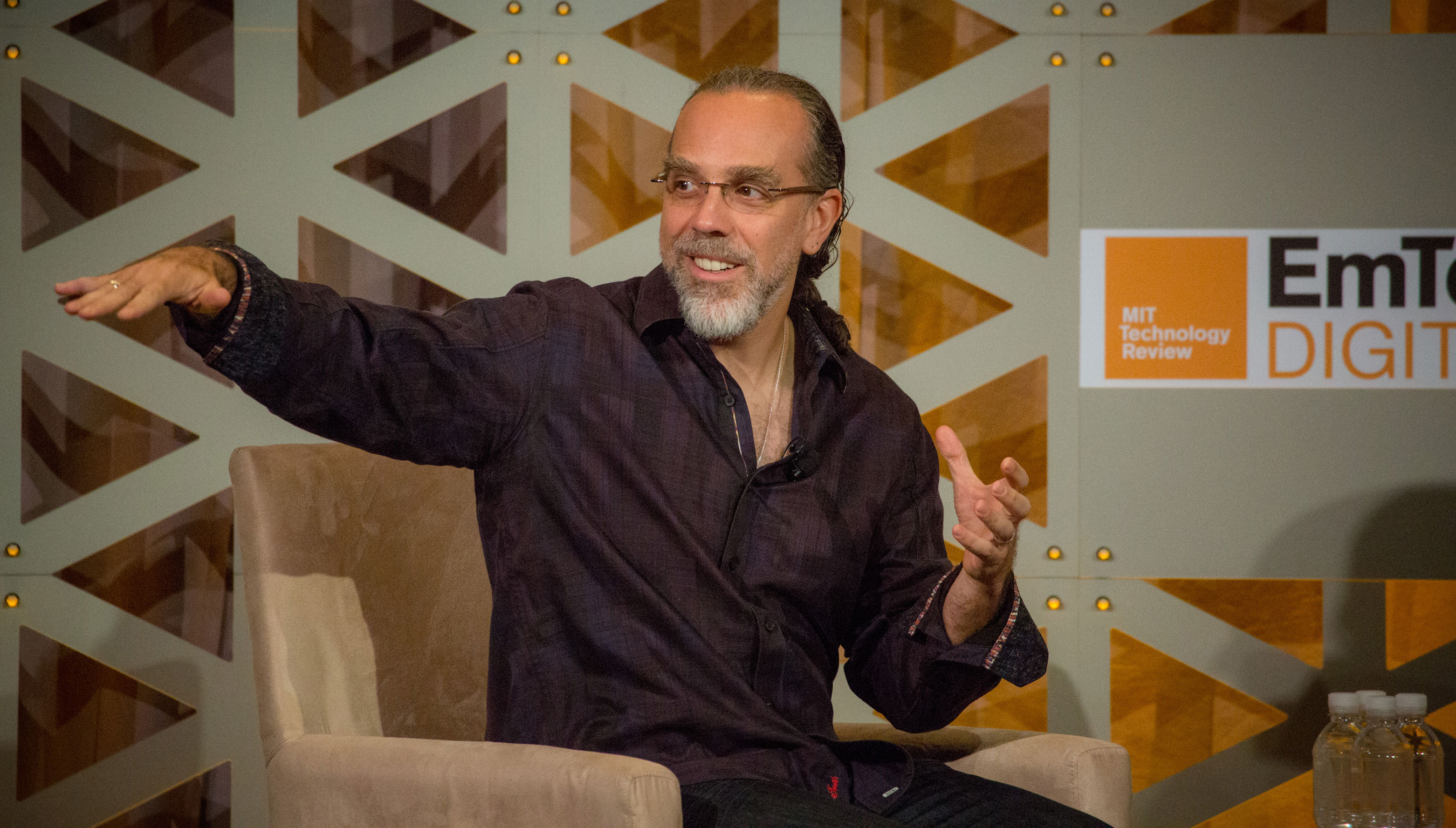Alphabet’s moonshot chief: Regulating driverless cars demands testing the “smarts” of the systems

The head of Alphabet’s X division says that society needs to develop new ways to regulate autonomous vehicles, ideally by testing the “smartness” of specific systems.
Astro Teller, X’s chief of moonshots, made the point during an onstage interview at MIT Technology Review’s EmTech Digital conference in San Francisco. He was responding to a question from senior editor Martin Giles, who asked whether companies should halt testing of driverless cars on public roads following the fatal accident involving an Uber autonomous car earlier this month (see “What Uber’s fatal accident could mean for the autonomous-car industry”).
Teller declined to discuss Uber specifically, but he said he’s intentionally stepped in front of moving Waymo cars “many times” himself, in a clear suggestion that he believes the vehicles first developed by his own X division are safer.
“I feel incredibly comfortable doing that, because I know what testing we’ve done,” he said.
Indeed, in response to an earlier audience question, Teller stressed that developing and evaluating safe and predictable AI systems requires incredible amounts of real-world and virtual testing. He said that Waymo has driven some 2.5 billion miles in simulations that closely match real-world conditions in the last 12 months, while its cars have driven more than five million miles on physical roads with “hyper-well-trained drivers behind the wheel.”
Moreover, he added that for many thousands of those real-world miles, they deliberately subjected the system to “pathological situations," testing the sensors and software in unpredictable scenarios. They've had people dressed as Elmo, hiding in bags, and lying down on skateboards all pop out in front of the vehicles, Teller said.
“You have to test in the physical world, you have to do it incredibly carefully, and you have to create the worst situations you can while you’re doing it in very controlled circumstances,” he said.
Waymo’s chief executive, John Krafcik, was more explicit about the relative safety of its system versus Uber’s in recent days. During a speech at the National Automobile Dealers Association conference in Las Vegas, he said of the accident, according to Bloomberg: “We have a lot of confidence that our technology would be robust and would be able to handle situations like that one.”
Keep Reading
Most Popular
How scientists traced a mysterious covid case back to six toilets
When wastewater surveillance turns into a hunt for a single infected individual, the ethics get tricky.
The problem with plug-in hybrids? Their drivers.
Plug-in hybrids are often sold as a transition to EVs, but new data from Europe shows we’re still underestimating the emissions they produce.
What’s next for generative video
OpenAI's Sora has raised the bar for AI moviemaking. Here are four things to bear in mind as we wrap our heads around what's coming.
Stay connected
Get the latest updates from
MIT Technology Review
Discover special offers, top stories, upcoming events, and more.